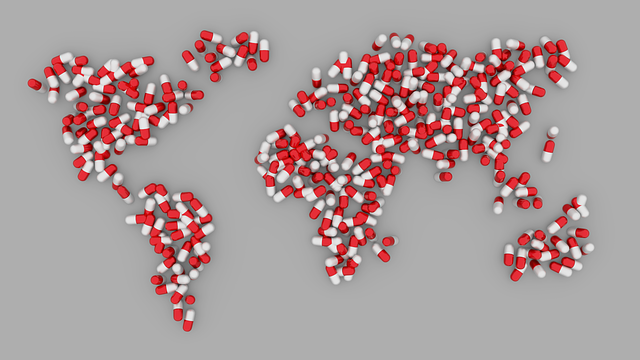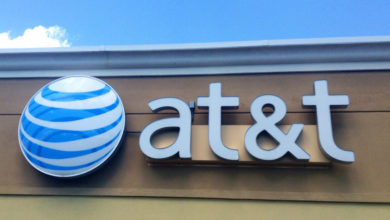Health
Blockchain in Healthcare: Real-World Use Cases

Blockchain technology can enable patients to own their data while ensuring that clinicians have a holistic view of existing conditions and treatments. From health records to insurance claims and supply chain management, we explore the various use cases.
The American College of Surgeons Bulletin describes blockchain as a technology that can create a “convergence point for health information.” As healthcare has become increasingly “datafied” over the last decades, blockchain technology can provide a way of coping with growing quantities of increasingly complex health data.
Only in the USA, healthcare expenditures were approximately $3.55 trillion in 2017 and are predicted to reach more than $5 trillion by 2025. The main reason for this cost is the substantial percentage of that spending that is dedicated to administrative fees, medical tests usually overpriced, and medical fraud, duplicating services due to poor communications, among others.
Blockchain’s characteristics can be applied to improve not only this situation but many others. Because it is immutable, decentralized and trustless, it can cut costs, optimize processes, improve transparency and cut operational costs.
Specifically, blockchain can contribute in three ways: Firstly, it can improve the interoperability of different healthcare platforms and supply chains. Secondly, patients can store lifelong health records securely on blockchain platforms and own their data. Thirdly, it can reduce siloed patient datasets (a data silo is an archive of fixed data that is under the control of one department) and thus improve medical research and treatment.
While there are various benefits of blockchain technology, there is a gap between the theory and practical, real-life applications. Thus, instead of fantasizing what could be possible, let’s look at what is actually being done.
Supply chain monitoring
Chronicled is tackling one of the most prominent use cases for blockchain in healthcare. They have developed a platform that tracks pharmaceuticals, blood, and human organs. It also uses a portable smart sensor that stores temperature readings on a blockchain to ensure secure data transmission. The system provides a CryptoSeal which can be scanned and verified against the blockchain registry at each stop in the supply chain.
Being able to trace back in the supply chain to identify an issue in the event of an audit or recall is particularly important to ensure safety, credibility and trust. In addition, there are projects that aim at applying blockchain with Artificial Intelligence (AI), which analyzes data to make processes more efficient.
While use cases that involve storing patient data come with multiple data privacy challenges, supply chain provenance solutions are simpler to implement.
Blockchain-based health records
Patientory enables users to store and manage their health information in real-time. Users can create a life-long health record, which they can carry with them whenever they have to see their doctor. Patientory uses its own cryptocurrency (PTOY) that allows users to buy more storage.
Like most healthcare blockchain applications, Patientory has turned to a private blockchain, in which all of the nodes are located within a secure network. Anthony Begando, CEO of Professional Credentials Exchange, says,
“If you want to create industrial level solutions that blockchain is ideal for, you have to be able to ensure privacy. You need to isolate transaction sets, so a competitor doesn’t know what another competitor is acquiring. These are real-world business realities.”
Health claims management
PokitDok develops APIs for healthcare verticals such as claims, pharmacies, and identity management. It provides a secure network for various sources of patient data which it gathers from multiple sources. In its demo, PokitDoc demonstrated how it can run an insurance claim eligibility check in seconds rather than hours or days.
In terms of monetary impact, this implementation of blockchain is essential in claims adjudication and billing management.
“Blockchain technology may not be the panacea for healthcare industry challenges, but it holds the potential to save billions of dollars by optimizing current workflows and disintermediating some high-cost gatekeepers” stated in Frost&Sullivan research Blockchain Technology in Global Healthcare, 2017–2025.
Another prominent example is California-based Gem, which allows patients, providers, and insurers to securely view a patient’s data in real-time, improving speed and transparency throughout the claims process.
The Gem Healthcare Network is a permissioned blockchain which is based on the Etherum blockchain. The company has also partnered with Philips to explore how blockchain can be used to integrate data from sources such as employee wellness programs or wearable health monitors.
Those are all promising applications. But despite the benefits blockchain technology provides for the healthcare sector, we shouldn’t get carried away quite yet.
“There’s only so much technology can account for, and you can still have some of those mistakes that you currently have with human error,” says Karolina Starczak from Nutrimedy.
“Just throwing another solution on top of it may not remove some of those root causes that we know exist and can sometimes be a little bit concerning.”
Dennis Grishin, CSO of Nebula Genomics says blockchain technology is just a part of the story. “It’s an important part, but it’s not the only part,” he says. Eventually, blockchain technology will have to be deployed in line with other technologies, to create a more efficient healthcare environment.




It is important to only use prescription medications as directed by a healthcare provider and to never share them with others. vidalista professional 20 reviews
Pills news leaflet. Brand names. vidalista 20 All trends of medication. Get now.
https://reg2165.wixsite.com/dzenremont/post/%D1%80%D0%B5%D0%BC%D0%BE%D0%BD%D1%82-%D1%81%D1%82%D0%B8%D1%80%D0%B0%D0%BB%D1%8C%D0%BD%D1%8B%D1%85-%D0%BC%D0%B0%D1%88%D0%B8%D0%BD
Lhqlvn vidalista 60 Rwznky
what does topamax do buy cheap online dapoxetine dapoxetine 30 mg and sildenafil 50mg tablets samagra